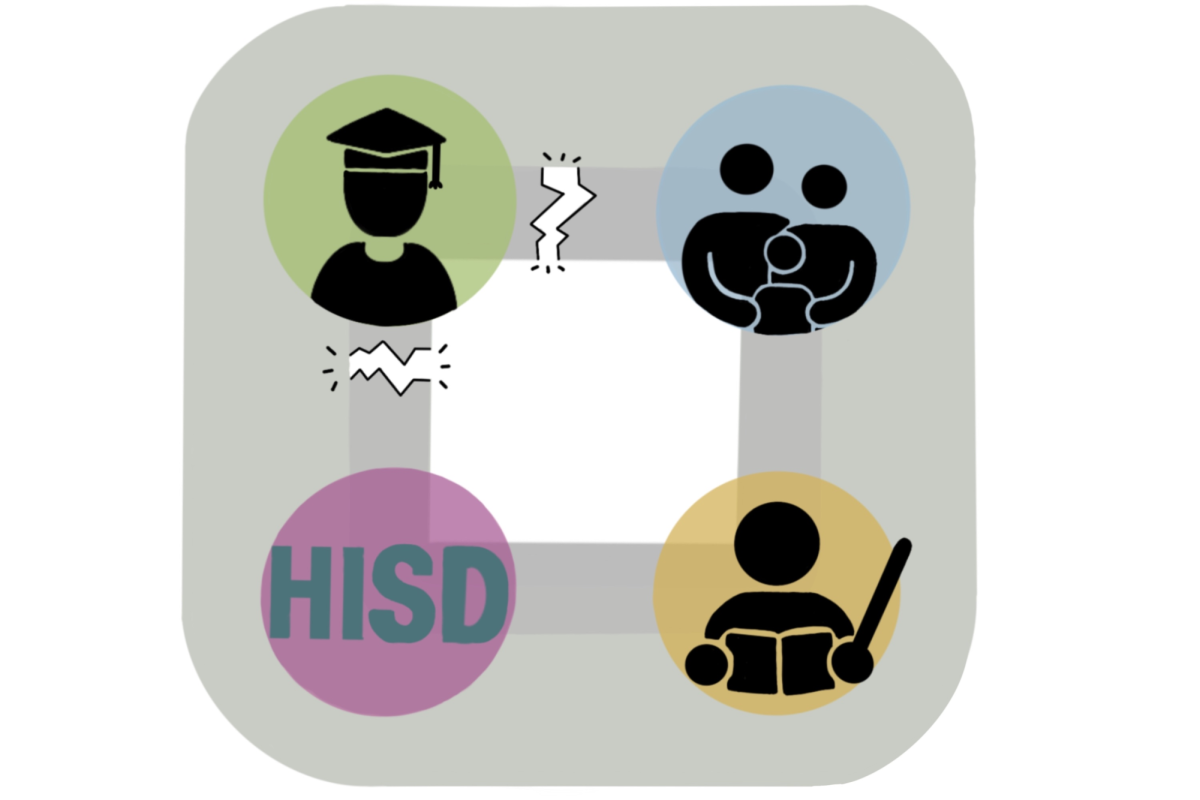As a junior, I’m scared for my future.
When I apply for college next year, how will this process change?
And what’s to come for the millions of K-12 students left unaccounted for and untracked?
I, along with millions of other students, struggle in limbo with the recent gutting of the federal government by the Department of Government Efficiency. With massive cuts left and right, we don’t know how the Department of Education’s financial resources will be allocated, and it’s scary realizing that the system you grew up with – the system you thought you knew – is suddenly changing.
Originally established in 1979 by former President Jimmy Carter, the ED aimed to expand educational opportunities, create federal education programs, and bolster U.S. education. Today, it’s tasked with establishing, administering and coordinating federal assistance to education.
The Republican party has had a long-standing goal of decentralizing education and returning the control of education to the states. This will ultimately allow each individual state to decide on the content of curriculum being taught – including topics like race and gender.
More recently, Secretary of Education Linda McMahon vowed in a congressional hearing to follow through with President Donald Trump’s vision to eliminate the ED entirely, stating that other agencies “could better serve our students and parents on a local level.”
The problem?
Dismantling the ED threatens American education as a whole by polarizing education and emboldening states to implement policies that fit their political agendas without pushback. States would be free to spend federal funding however they would like with no strings attached. If states want to go all in on school vouchers, which harm public education — especially for low-income students — by diverting funds to private schools, they can. Restricting LGBT students? Why not; the federal government is paying.
Aside from curriculum, research will suffer as well, with the DOGE already cutting $900 million worth of contracts in the ED, targeting the Institute of Education Sciences, the agency’s research sector, as well as cutting nearly half the ED’s workforce through mass layoffs to downsize the federal government.
If current trends continue, the IES will no longer fund education research, meaning we’ll handicap studies tracking K-12 learning and teaching strategies, hinder research for support for disabled students and generate an overall void in understanding education. This is especially concerning considering that 72% of 4th graders with disabilities scored below the National Assessment of Educational Progress’ lowest achievement threshold for reading and 53% for math in 2024.
Without research, how do we know what works and what doesn’t in education?
While NAEP isn’t affected by the purge on the ED, assessments only tell us so much about the conditions of an institution. We need comprehensive reviews and solutions provided by studies that are now cut off by the current administration.
The agency overseeing NAEP, the National Center for Education Statistics, faces workforce cuts which strain the agency’s ability to estimate which districts qualify for aid from programs like Title I, which supports economically disadvantaged populations.
Since Bellaire High School qualifies for Title I funds, with 53 percent of students coming from economically disadvantaged families meaning that if the NCES is faced with a constant workload but dwindling workforce, our benefits may be at risk of reduction or delay due to processing constraints and reprioritization of resources. Free lunch, AP and SAT testing waivers and even college application fee waivers are all benefits we could lose if the NCES does not have enough workers to determine which areas of the United States need support.
Not only does American education need research, we must retain enough staff to properly assess applications for aid from schools, because if not, we risk crucial funding that aims to level the playing field for the majority of Bellaire students.
I’ll admit, the ED isn’t the most efficient agency out there, but having some support for research is better than none. Just because an agency has inefficiencies doesn’t warrant its abolition. If we see problems in a system, fix them – don’t eliminate the bureau along with the benefits.
Not to mention, what about college?
Besides looming uncertainties for K-12 education, the possible dissolution of the ED poses risks for rising high school seniors and college students as well.
Even with the Free Application for Federal Student Aid, which allows students to access and qualify for financial aid intact, abolishing the ED means handing over duties to other agencies, such as the Small Business Administration, jeopardizing financial aid and student loans.
Dissolving the ED means redistributing tasks that would overwhelm the SBA, as it’s already undergone mass layoffs and has existing duties, resulting in more deficiencies and bureaucratic backlog. If the government wants to ensure smooth sailing for reallocated tasks, it would need to increase staffing. At that point, it’s better to keep the ED and its staff to manage students’ loans.
Higher education finances are already known for being headaches and delegating new tasks to new entities would only perpetuate more confusion, prolonging a complex and tedious process.
Specifically, we’ve already seen the repercussions of moving tasks. During the 2008 financial crisis, the ED moved part of its student-loan portfolio to a different servicer, and instead of better management, we were met with accidental defaults, mispayments and a mess that took six years and $110 million to rectify.
The ED has overseen FAFSA since its inception in 1992, why would another agency with zero experience struggle any less?
It’s no secret that FAFSA is flawed, but the ED is still best equipped to manage it,, because they’re the most experienced, and no other department has ever dealt with FAFSA or federal student loans successfully.
If anything, delegating oversight of FAFSA to a new entity only means more delays for students in the time it takes to transition, and the future of federal student loans would be uncertain.
Even though student loans would still be available, terms would become stricter under new management, threatening the affordability of higher education. Students have two options: qualify for no financial aid and risk an education, or turn to private student loans, which are notorious for having less transparency and protections for borrowers. Either way, students will shoulder the greatest burdens if the ED is abolished and duties are restructured.
Dismantling the ED under the guise of efficiency is a dangerous game we simply cannot afford to play. What the government needs is reform, not blind gutting.
To start, the ED should establish guidelines to track their programs’ efficiencies and funds. This allows for increased transparency and accountability, making it easier to address discrepancies within the system.
Education should be at the top of the government’s agenda, but the reduction and redistribution of the ED only acts to destabilize the futures of students pursuing higher education.
Congress recently introduced a bill to terminate the ED, H.R. 899, and we must urge our representatives to reject the legislation to preserve the integrity of American education and ensure stability.
The futures of millions of students, kindergarten and college alike, are on the line, and we can’t afford to stand idly on the sidelines.











Sarah Nitsun • Apr 11, 2025 at 7:14 am
This was so educational and well done!
Feifan Liu • Apr 2, 2025 at 11:54 pm
Wow! I learned quite a lot about education. Great article!
Clementine Behelfer • Apr 1, 2025 at 12:15 pm
This is an amazing story on such an important and relevant topic, good job Catherine!!
Alia Hassan • Mar 28, 2025 at 2:24 pm
Amazing story, very well researched catherine!